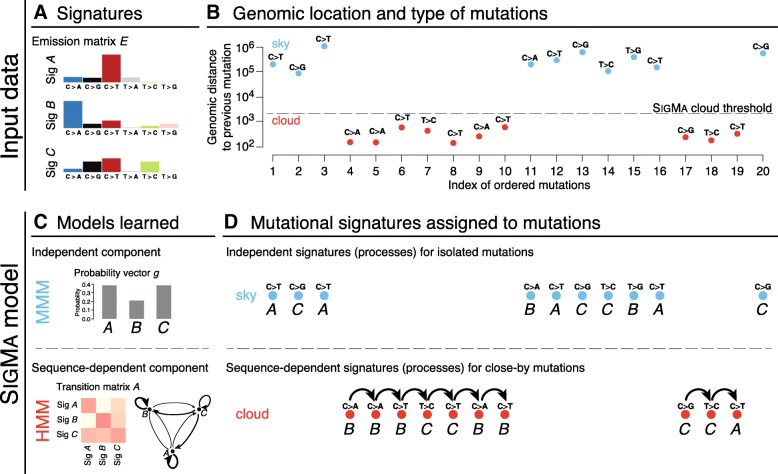Fig. 1.
Overview of the SIGMA model. The input data consists of (a) a set of predefined signatures that form an emission matrix E (here, for simplicity, represented over six mutation types) and (b) a sequence of mutation categories from a single sample and a distance threshold separating sky and cloud mutation segments. c The SIGMA model has two components: (top) a multinomial mixture model (MMM) for isolated sky mutations and (bottom) an extension of a hidden Markov model (HMM) capturing sequential dependencies between close-by cloud mutations; all model parameters are learned from the input data in an unsupervised manner. dSIGMA finds the most likely sequence of signatures that explains the observed mutations in sky and clouds

